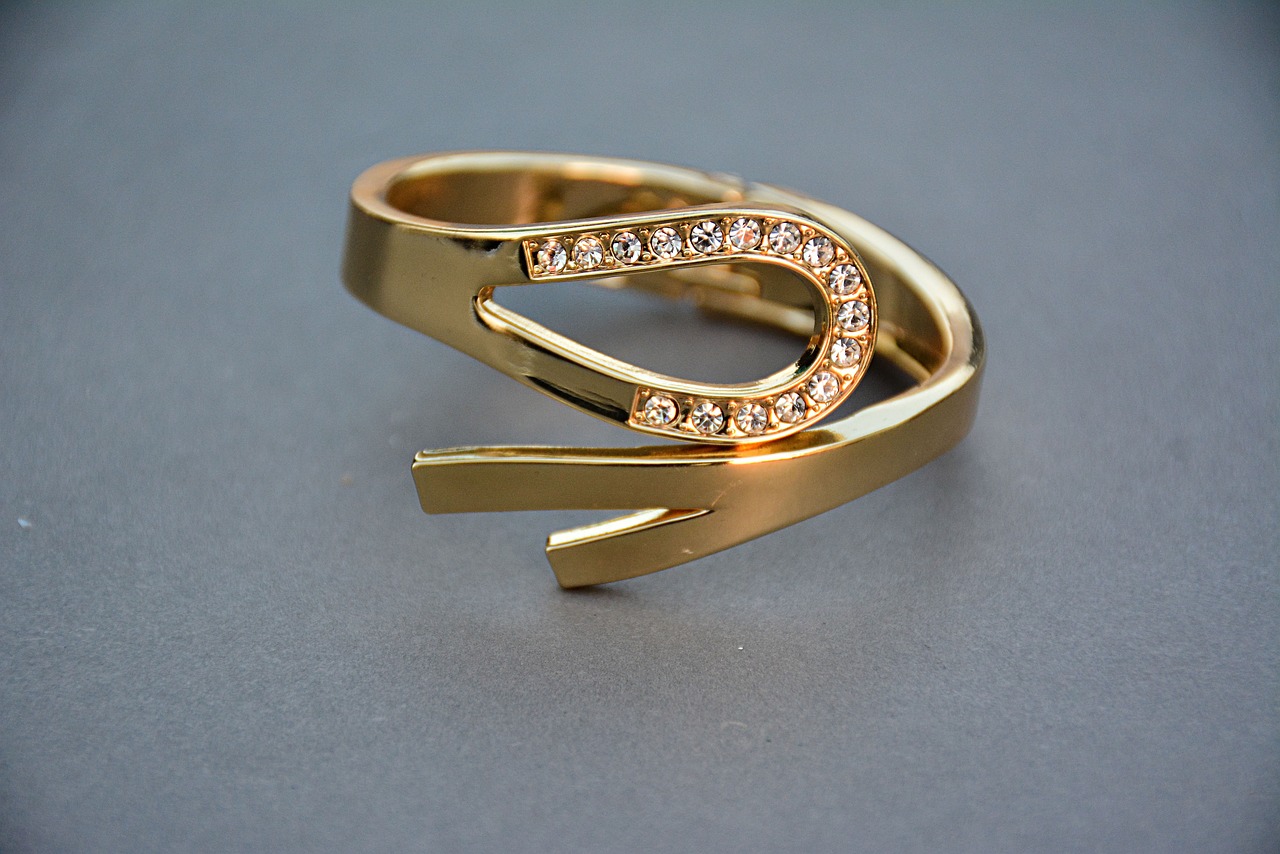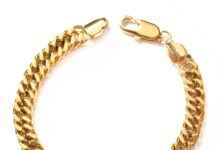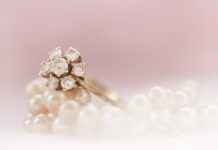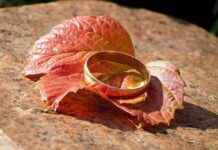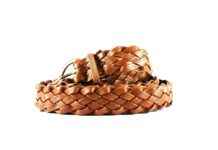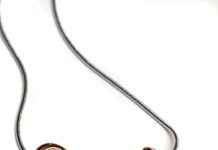This article delves into the evolution of jewelry styles throughout history, examining significant trends from various eras. We will explore their cultural significance and provide practical insights for modern enthusiasts who appreciate the artistry and history behind jewelry.
Ancient Jewelry: A Glimpse into History
Ancient jewelry serves as a captivating window into the craftsmanship and materials of early civilizations. Each piece tells a story, reflecting the beliefs, social status, and artistic expression of its time. From the intricate goldsmithing of the Egyptians to the use of natural stones by indigenous cultures, ancient jewelry was often imbued with spiritual significance and used in rituals and ceremonies.
Victorian Era: Elegance and Sentimentality
The Victorian era introduced a wave of intricate designs and sentimental pieces that showcased the emotional connections people had with jewelry. During this time, jewelry became a form of personal expression, often given as gifts to signify love and commitment.
- Materials Used in Victorian Jewelry: Common materials included gold, silver, and various gemstones. Techniques such as enameling and engraving were popular, enhancing the beauty and value of each piece.
- Popular Gemstones of the Victorian Era: Gemstones like diamonds, garnets, and pearls held particular favor, each symbolizing different emotions and sentiments.
- Symbolism in Victorian Jewelry: Motifs such as hearts, locks, and flowers represented love, fidelity, and remembrance, making each piece deeply personal.
Art Deco: Bold and Geometric Designs
The Art Deco period marked a significant shift towards bold, geometric designs characterized by vibrant colors and innovative materials. This era reflected the modern spirit of the 1920s and influenced a wide range of artistic expressions.
- Key Characteristics of Art Deco Jewelry: Known for clean lines and symmetry, Art Deco jewelry often utilized materials like platinum and colored gemstones, creating a striking contrast to previous styles.
- Influence of Art Deco on Modern Jewelry: Many contemporary pieces echo the distinctive style and elegance of Art Deco, showcasing its lasting impact on jewelry design.
Retro Jewelry: A Celebration of Glamour
The Retro era, spanning the 1940s to 1960s, celebrated glamour and extravagance. This period produced bold designs that mirrored the cultural shifts of post-war society.
- Materials and Techniques in Retro Jewelry: Gold was often used in unique colors, alongside innovative techniques that created striking and fashionable pieces.
- Iconic Retro Jewelry Styles: Styles such as cocktail rings and statement necklaces emphasized individuality and personal expression, making a bold statement.
Contemporary Jewelry: Trends and Innovations
Today’s jewelry landscape is characterized by a blend of traditional craftsmanship and modern technology. This fusion results in unique styles that cater to diverse tastes and preferences.
- Sustainable Practices in Contemporary Jewelry: Sustainability has become a vital focus, with many artisans prioritizing ethical sourcing and environmentally friendly practices.
- Personalization in Modern Jewelry: Personalized jewelry has gained immense popularity, allowing individuals to express their identities and stories through custom pieces.
In conclusion, the evolution of jewelry styles over the centuries reflects the cultural, social, and technological changes of each era. Understanding these trends not only enriches our appreciation of jewelry but also inspires modern enthusiasts to explore and embrace the artistry of the past.

Ancient Jewelry: A Glimpse into History
Ancient jewelry serves as a captivating window into the past, revealing the intricate craftsmanship and diverse materials employed by early civilizations. These artifacts not only showcase the artistic talents of their creators but also reflect the cultural beliefs, social status, and personal expressions of the people who wore them.
Throughout history, jewelry has been more than mere decoration; it has played a significant role in various rituals and social customs. For instance, in ancient Egypt, jewelry was often associated with the divine and was believed to possess protective properties. Gold, a symbol of wealth and immortality, was frequently used to create stunning pieces adorned with precious stones like lapis lazuli and turquoise.
In Mesopotamia, intricate jewelry designs were crafted using silver and carnelian, reflecting the artisans’ skills and the region’s rich resources. These pieces often featured motifs that symbolized fertility, power, and protection, showcasing the deep connections between jewelry and the cultural values of the time.
Similarly, ancient Greeks and Romans utilized jewelry as a means of personal expression and social status. They crafted pieces using gold and gemstones, often incorporating mythological themes and intricate designs that conveyed messages of beauty and power. For example, the use of cameos and intaglios became popular, allowing wearers to display their lineage and achievements.
As we explore the evolution of jewelry through the ages, it becomes evident that ancient pieces are not merely artifacts; they are a testament to human creativity and the enduring significance of adornment in our lives. Today, modern jewelers draw inspiration from these ancient designs, blending traditional techniques with contemporary aesthetics to create pieces that honor the past while appealing to modern sensibilities.
In conclusion, ancient jewelry offers invaluable insights into the lives and beliefs of early civilizations. By studying these remarkable artifacts, we gain a deeper understanding of the cultural narratives that shaped human history and the enduring allure of jewelry as a form of expression.

Victorian Era: Elegance and Sentimentality
The Victorian era, spanning from 1837 to 1901, was a time of significant social change and cultural evolution. This period is renowned for its elegance and sentimentality in jewelry design, reflecting the emotional connections that individuals formed with their adornments. Jewelry during this time was not merely decorative; it served as a symbol of personal relationships and memories, often passed down through generations.
One of the most striking features of Victorian jewelry was its intricate designs. Craftsmen utilized a variety of techniques, including enameling, engraving, and filigree, to create pieces that were both visually stunning and rich in detail. The use of natural motifs such as flowers, leaves, and vines was prevalent, embodying the era’s fascination with nature and romanticism.
| Material | Description |
|---|---|
| Gold | Commonly used for its durability and luster, often in yellow or rose tones. |
| Silver | Favored for more affordable pieces, often combined with gemstones. |
| Gemstones | Diamonds, garnets, and pearls were particularly popular, each carrying unique meanings. |
Moreover, the symbolism in Victorian jewelry played a crucial role in its appeal. Pieces often featured motifs like hearts, locks, and mourning jewelry, which conveyed messages of love, fidelity, and remembrance. For instance, a piece adorned with a heart symbol could signify deep affection, while a locket might hold a cherished photo of a loved one.
Fashion trends of the Victorian era also significantly influenced jewelry design. The elaborate dresses and corsets of the time called for grand pieces that complemented the overall aesthetic. As women sought to express their individuality, jewelry became an integral part of their fashion statement.
In conclusion, the Victorian era was a pivotal time for jewelry, marked by its elegance and sentimentality. The intricate designs, rich symbolism, and influence of fashion trends created a unique landscape that continues to inspire modern jewelry enthusiasts today.
Materials Used in Victorian Jewelry
Victorian jewelry is renowned for its intricate designs and emotional significance, reflecting the values and aesthetics of the era. The materials used in this jewelry were not only chosen for their beauty but also for their symbolic meanings. A variety of metals and gemstones were utilized, each contributing to the overall allure of the pieces.
One of the most prominent materials in Victorian jewelry was gold, often used in various karats to create stunning pieces that ranged from delicate to bold. Silver also played a significant role, especially in more affordable pieces, allowing a broader audience to enjoy exquisite jewelry. The combination of these metals often resulted in intricate designs that showcased the craftsmanship of the period.
In addition to metals, gemstones were integral to Victorian jewelry. Popular choices included diamonds, garnets, and pearls. Each gemstone was selected not only for its visual appeal but also for its symbolic significance. For instance, diamonds were often associated with love and eternity, while garnets represented passion and devotion. Pearls, on the other hand, symbolized purity and were frequently used in bridal jewelry.
The techniques employed in crafting Victorian jewelry were equally impressive. Enameling added vibrant colors and intricate patterns, enhancing the visual impact of the pieces. This technique involved fusing powdered glass to metal, resulting in a smooth, glossy finish that captivated wearers. Engraving was another popular method, allowing artisans to add personalized touches and elaborate designs, making each piece unique.
Overall, the materials and techniques used in Victorian jewelry not only enhanced its beauty and value but also connected the pieces to the emotional narratives of the individuals who wore them. This era’s jewelry remains a testament to the artistry and sentimentality of its time.
Popular Gemstones of the Victorian Era
The Victorian era, spanning from 1837 to 1901, was a time of remarkable change and cultural evolution. During this period, jewelry became not only a form of adornment but also a medium for expressing deep emotions and personal stories. Among the various materials used, certain gemstones emerged as particularly significant, each embodying unique meanings and cherished sentiments.
Diamonds were the ultimate symbol of love and commitment. Their unmatched brilliance and durability made them a favorite choice for engagement rings and other romantic jewelry. The Victorian fascination with diamonds was fueled by advancements in cutting techniques, which enhanced their sparkle and allure. Diamonds were often associated with purity and strength, making them a timeless choice for significant life events.
Garnets, on the other hand, were believed to represent passion and loyalty. These deep red stones were commonly used in mourning jewelry, as they were thought to provide protection to the wearer. Garnets were also favored for their vibrant color, which added a touch of drama to various pieces, from brooches to earrings. Their popularity during the Victorian era can be attributed to their versatility and the emotional connections they fostered.
Pearls held a special place in Victorian jewelry, symbolizing purity and innocence. Often associated with weddings and special occasions, pearls were a staple in the jewelry boxes of many women. Their soft, lustrous appearance made them ideal for creating elegant necklaces and bracelets. The Victorian belief in the mystical properties of pearls further enhanced their desirability, as they were thought to bring wisdom and tranquility to the wearer.
In conclusion, the gemstones favored during the Victorian era—diamonds, garnets, and pearls—were not merely decorative elements; they carried profound meanings and were integral to the jewelry’s emotional and cultural significance. Understanding these stones and their symbolism allows modern enthusiasts to appreciate the rich history and artistry behind Victorian jewelry.
Symbolism in Victorian Jewelry
Victorian jewelry is a fascinating reflection of the emotional and cultural landscape of the 19th century. During this era, jewelry was not merely an accessory; it was a symbolic expression of personal feelings, relationships, and societal values. Each piece carried a unique story, often intertwined with themes of love, loss, and remembrance.
The Victorian era, spanning from 1837 to 1901, saw a surge in the popularity of sentimental jewelry. This type of jewelry was designed with intricate motifs that conveyed deep meanings. For instance, the heart symbol represented love and affection, while locks often signified secrecy and fidelity. Flowers, too, played a significant role, with different types symbolizing various emotions and sentiments.
One of the most notable aspects of Victorian jewelry was the use of memento mori designs, which served as a reminder of mortality. These pieces often featured skulls or hourglasses, encouraging wearers to cherish their loved ones and the time they had together. Such motifs were a poignant reminder of the transience of life and the importance of memory.
Additionally, the practice of giving lockets became popular during this time. These pieces often contained photographs or hair from loved ones, allowing individuals to carry a part of their sentimental connections with them. Such personal touches made each piece of jewelry not just an ornament, but a cherished keepsake.
Victorian jewelry also embraced the language of flowers, where specific blooms conveyed distinct meanings. For example, a rose symbolized love, while a forget-me-not represented remembrance. This intricate symbolism added layers of meaning to the jewelry, making it deeply personal and reflective of the wearer’s emotions.
In conclusion, the symbolism in Victorian jewelry is a testament to the era’s rich emotional tapestry. Each piece was imbued with meaning, serving as a lasting reminder of personal connections and societal values. Understanding these symbols not only enhances our appreciation of Victorian jewelry but also connects us to the sentiments of a bygone era.
Fashion Trends Influencing Victorian Jewelry
The Victorian era, spanning from 1837 to 1901, was a time of remarkable change in fashion and societal norms. This period not only revolutionized clothing styles but also had a profound impact on jewelry design. The intricate and elaborate fashions of the time, particularly the use of corsets and flowing dresses, played a crucial role in shaping the aesthetics of jewelry.
During the Victorian era, the silhouette of women was dramatically altered by the corset, which emphasized an hourglass figure. This shift in fashion led to the creation of jewelry that complemented these shapes. Long, dangling earrings and ornate necklaces became popular, designed to accentuate the neckline and draw attention to the face. Brooches and hair ornaments were also favored, often featuring intricate designs that mirrored the elaborate patterns found in Victorian dresses.
Moreover, the Victorian fascination with nature and romanticism influenced jewelry motifs. Floral designs, which were prevalent in both clothing and jewelry, often featured in pieces made from gold and adorned with colorful gemstones. The use of sentimental jewelry, such as lockets containing photos or hair from loved ones, became a significant trend, reflecting the emotional connections people had with their adornments.
As the era progressed, the influence of Queen Victoria herself, who favored specific styles and gemstones, further dictated trends. Her love for diamonds, emeralds, and pearls led to a surge in popularity for these precious stones, which were often set in elaborate, multi-layered designs that mirrored the complexity of Victorian fashion.
In conclusion, the fashion trends of the Victorian era were not just limited to clothing; they significantly influenced the world of jewelry design. The ornate, grand pieces that emerged during this time remain a testament to the intricate relationship between fashion and jewelry, showcasing a period where personal expression and emotional sentiment were beautifully intertwined.
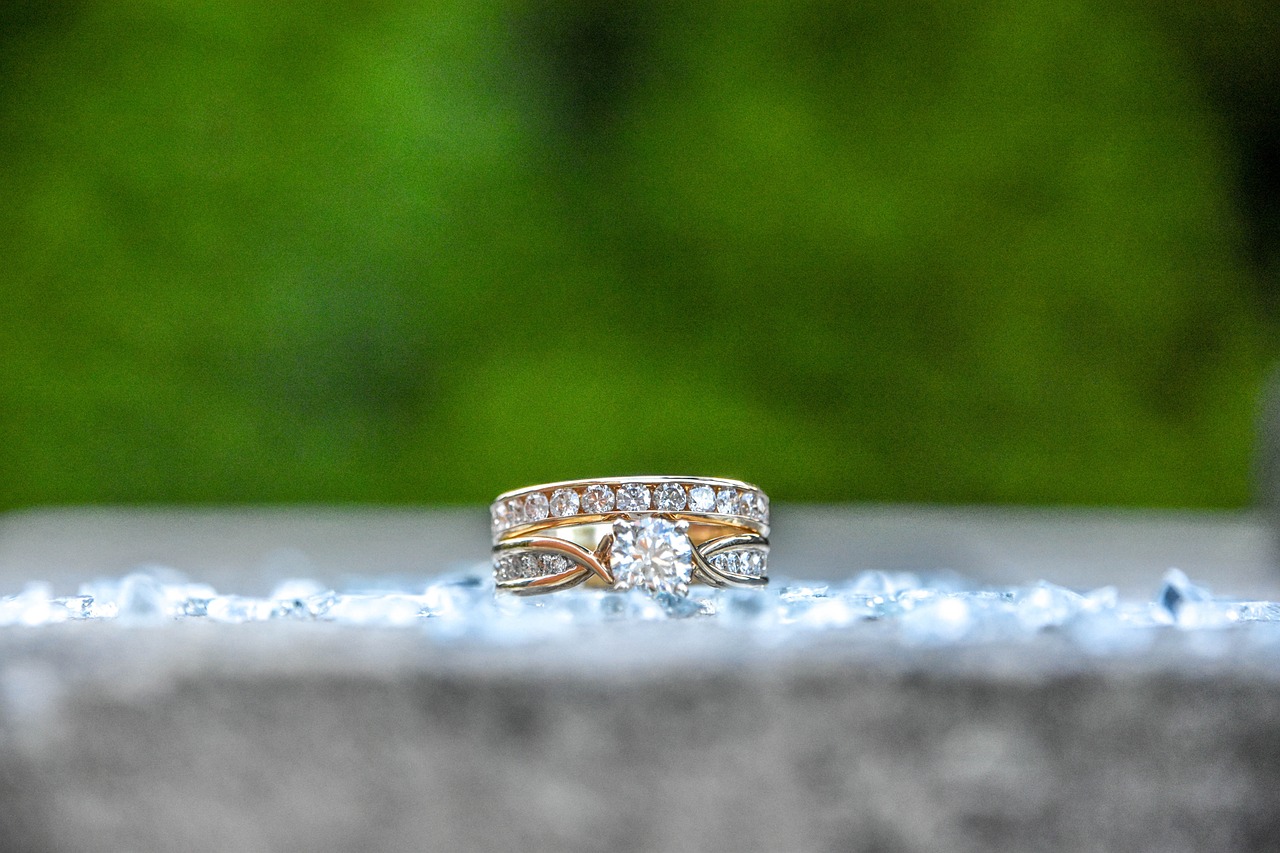
Art Deco: Bold and Geometric Designs
The Art Deco period, which flourished in the 1920s and 1930s, marked a significant transformation in the world of design, especially in jewelry. This era is celebrated for its bold and geometric designs, which broke away from the ornate and intricate styles of previous periods. Art Deco jewelry is characterized by its use of vibrant colors and innovative materials, reflecting the dynamic spirit and optimism of the modern age.
One of the defining features of Art Deco jewelry is its clean lines and symmetrical shapes. These designs often incorporate geometric patterns, such as chevrons, zigzags, and stepped forms, which were inspired by the advancements in technology and architecture of the time. The use of materials like platinum, gold, and colored gemstones like sapphires, emeralds, and rubies added to the luxurious appeal of these pieces.
During this period, jewelry was not just an accessory but a statement of modernity and sophistication. Art Deco pieces often featured streamlined designs that emphasized a sense of movement and energy, aligning perfectly with the cultural shifts of the Roaring Twenties. The influence of Cubism and Futurism in art also played a crucial role in shaping the aesthetic of Art Deco jewelry.
Moreover, the Art Deco movement was a reflection of the societal changes occurring at the time, including the rise of the flapper culture and the increasing independence of women. Jewelry designs began to cater to a more liberated lifestyle, with long necklaces, bracelets, and earrings that complemented the new fashion trends.
In conclusion, the Art Deco period was a pivotal moment in the history of jewelry design. Its emphasis on boldness, innovation, and geometric aesthetics not only transformed how jewelry was created but also how it was perceived. Today, the influence of Art Deco continues to resonate in modern jewelry, showcasing a timeless elegance that remains relevant.
Key Characteristics of Art Deco Jewelry
Art Deco jewelry represents a significant evolution in the world of adornment, emerging in the early 20th century. This style is characterized by its bold geometric shapes, vibrant colors, and a sense of modernity that reflects the spirit of the 1920s and 1930s. Unlike previous styles that emphasized intricate details and natural forms, Art Deco embraced a more streamlined and symmetrical aesthetic.
One of the most notable features of Art Deco jewelry is its use of platinum as a primary metal. This choice not only adds to the durability of the pieces but also enhances their luxurious appeal. The incorporation of colored gemstones, such as sapphires, emeralds, and rubies, further contributes to the vibrant look characteristic of this era. These stones were often cut in innovative ways, showcasing their brilliance and color in a manner that had not been seen before.
Art Deco jewelry also frequently employed enamel work, which added depth and contrast to the designs. The use of contrasting materials, such as diamonds paired with onyx or jade, created striking visual effects that captivated wearers and collectors alike. This period marked a departure from the romantic and ornate styles of the past, favoring a more industrial and streamlined approach.
Furthermore, Art Deco jewelry often featured motifs inspired by technology, architecture, and the natural world, reflecting the cultural shifts of the time. Designs included stylized floral patterns, zigzags, and chevrons, all of which conveyed a sense of movement and dynamism.
In conclusion, the key characteristics of Art Deco jewelry lie in its clean lines, bold colors, and innovative use of materials. This style not only revolutionized the jewelry industry but also paved the way for future design movements, leaving a lasting legacy that continues to inspire modern jewelry designers today.
Influence of Art Deco on Modern Jewelry
The Art Deco movement, which flourished during the 1920s and 1930s, is renowned for its bold and geometric designs that revolutionized the world of art and fashion, including jewelry. This distinctive style is characterized by its use of symmetry, vibrant colors, and a mix of luxurious materials, setting a new standard for elegance and sophistication.
In contemporary jewelry design, the influence of Art Deco is unmistakable. Many modern jewelers draw inspiration from the clean lines and geometric shapes that define Art Deco pieces, integrating these elements into their own creations. This revival can be seen in the use of platinum and colored gemstones, which were staples of the Art Deco era, now reimagined in contemporary settings.
One of the most notable aspects of Art Deco jewelry is its emphasis on craftsmanship. Modern designers continue to value the intricate techniques that were popularized during this era, such as filigree and enameling. These techniques not only enhance the aesthetic appeal of jewelry but also pay homage to the artistry of the past.
Furthermore, the cultural significance of Art Deco jewelry resonates today. It reflects a time of innovation and optimism, which is particularly appealing in a contemporary context where many seek to express individuality and style through their accessories. The revival of Art Deco motifs in modern pieces serves as a bridge that connects the past with the present.
In conclusion, the enduring influence of Art Deco on modern jewelry design is evident in the way contemporary pieces echo its distinctive style and elegance. As designers continue to explore and reinterpret these classic elements, Art Deco remains a vital source of inspiration, ensuring its legacy endures in the ever-evolving world of fashion.
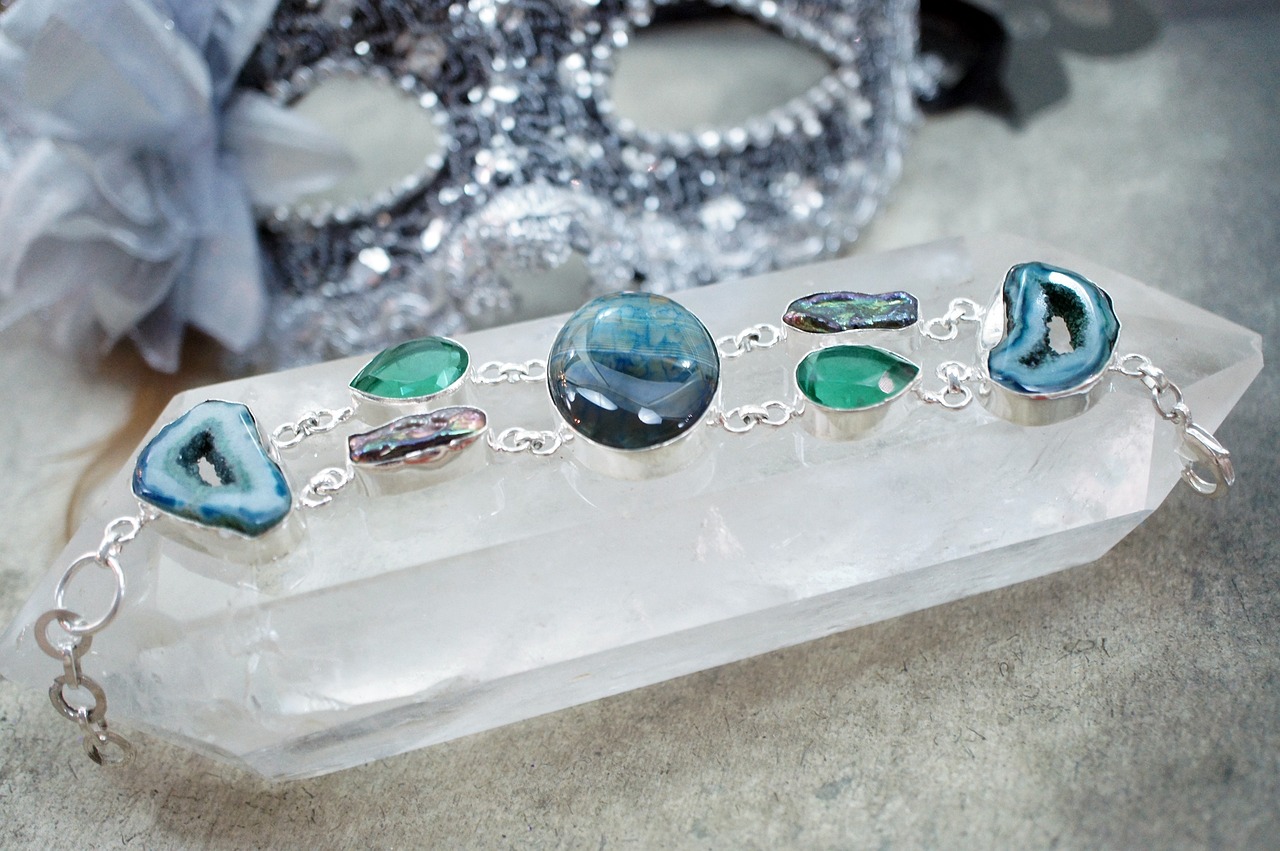
Retro Jewelry: A Celebration of Glamour
The Retro era, which flourished from the 1940s to the 1960s, was a time marked by a vibrant celebration of glamour and extravagance. This period reflected significant cultural shifts in post-war society, where optimism and a desire for individuality were expressed through bold and innovative jewelry designs.
During this era, jewelry became a statement of personal expression, with designs that showcased a sense of freedom and creativity. The use of bright colors, unique shapes, and unconventional materials defined the aesthetic of Retro jewelry, making it distinct from previous styles.
Retro jewelry often featured gold in various hues, including rose and yellow gold, which were crafted into striking pieces that captured attention. Techniques such as layering and enameling were commonly employed, allowing artisans to create intricate designs that were both fashionable and eye-catching.
- Cocktail Rings: These bold rings became a symbol of the era, often adorned with large gemstones and intricate designs that demanded attention.
- Statement Necklaces: Featuring chunky designs and vibrant colors, these necklaces were designed to complement the bold fashion trends of the time.
- Brooches: Often used as a fashion accessory, brooches were adorned with colorful stones and playful motifs, reflecting the whimsical nature of the era.
The Retro era also saw a rise in celebrity culture, which influenced jewelry trends. Icons of the time, such as Marilyn Monroe and Audrey Hepburn, popularized glamorous styles that inspired countless jewelry designs.
In conclusion, the Retro era was not just a period of extravagant jewelry but also a reflection of societal changes. The bold designs and innovative materials used during this time laid the groundwork for modern jewelry trends, making Retro pieces highly sought after by collectors and enthusiasts alike.
Materials and Techniques in Retro Jewelry
Retro jewelry, a vibrant reflection of the 1940s to 1960s, is characterized by its bold designs and innovative use of materials. This era, marked by significant cultural shifts and the aftermath of World War II, saw jewelry become a medium of personal expression and glamour.
- Gold in Unique Colors: One of the most striking features of retro jewelry is the use of gold in various hues, including pink and green gold. These unique colors were achieved through innovative alloying techniques, allowing jewelers to create pieces that stood out with their distinctive shades.
- Innovative Techniques: Retro jewelry makers employed a range of innovative techniques, such as casting and mold-making, which allowed for intricate designs and complex shapes. This period also saw the rise of machine-made components, which enabled mass production while maintaining a level of quality and craftsmanship.
- Use of Gemstones: Retro pieces often featured large, colorful gemstones, including citrine, aquamarine, and topaz. The bold use of these stones was a departure from the more subdued palettes of previous eras, reflecting a newfound exuberance in design.
- Textured Finishes: Texturing techniques, such as hammering and engraving, were commonly used to add depth and dimension to jewelry. These finishes not only enhanced the visual appeal but also created a tactile experience for the wearer.
In summary, retro jewelry is a celebration of creativity and individuality. The innovative use of materials and techniques during this era resulted in pieces that are not only striking but also carry a rich history and cultural significance. Collectors and enthusiasts today continue to cherish these unique creations, which serve as a testament to the artistic spirit of their time.
Iconic Retro Jewelry Styles
The Retro era, which flourished between the 1940s and 1960s, was a time of boldness and creativity in jewelry design. This period marked a significant shift in fashion, reflecting the changing social dynamics and the burgeoning sense of individuality. Among the most iconic jewelry styles of this era were cocktail rings and statement necklaces, each serving as a powerful means of personal expression.
Cocktail rings emerged as a symbol of glamour and extravagance. These rings were often large, featuring vibrant gemstones and intricate designs that captured attention. They were typically worn during social gatherings and parties, allowing wearers to showcase their unique style and flair. The boldness of cocktail rings encouraged individuals to embrace their personal taste, making them a staple for those looking to stand out.
Similarly, statement necklaces became a focal point of Retro fashion. These pieces were characterized by their oversized designs and striking colors, often incorporating a mix of materials such as gold, silver, and colorful stones. Statement necklaces were not just accessories; they were statements of identity and personal style. Women wore them to complement their outfits, enhancing their overall look while asserting their individuality.
The Retro era’s emphasis on individuality and personal expression in jewelry can be seen as a reflection of the broader cultural shifts occurring at the time. As society moved away from the constraints of tradition, jewelry became a canvas for self-expression. This period encouraged people to experiment with their style, leading to a vibrant and diverse range of jewelry that celebrated personal stories and identities.
In conclusion, the iconic styles of the Retro era, particularly cocktail rings and statement necklaces, played a crucial role in shaping the landscape of jewelry design. They not only highlighted the importance of personal expression but also paved the way for future trends that continue to influence contemporary jewelry. Embracing the boldness of this era allows modern enthusiasts to connect with a rich history of creativity and individuality.
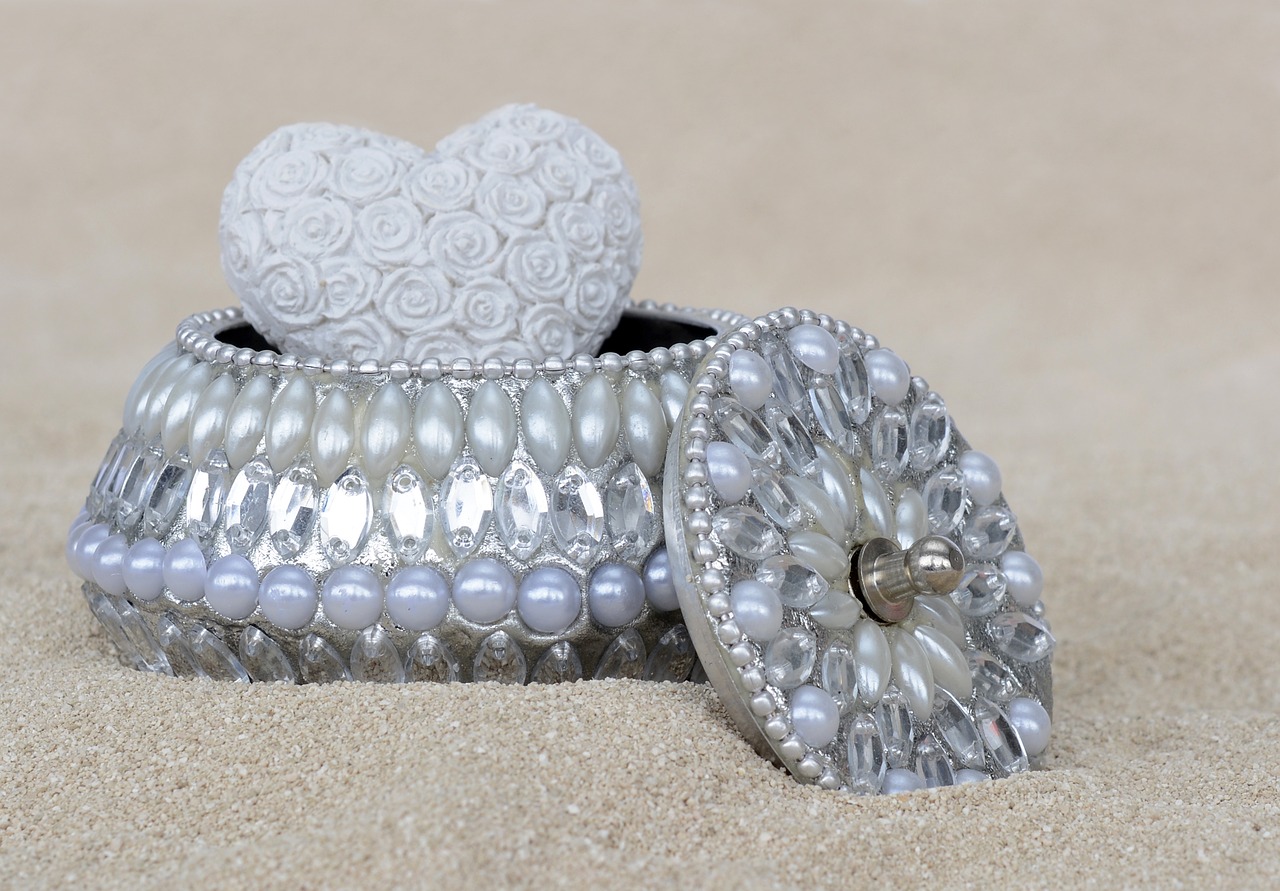
Contemporary Jewelry: Trends and Innovations
The world of jewelry has experienced a remarkable transformation in recent years, characterized by a harmonious blend of traditional craftsmanship and modern technology. This evolution has given rise to a variety of unique styles that cater to a wide array of tastes and preferences, making contemporary jewelry a vibrant and dynamic field.
One of the most significant trends in contemporary jewelry is the emphasis on sustainability. Many artisans and brands are prioritizing ethical sourcing of materials, ensuring that their products are not only beautiful but also environmentally friendly. This shift is driven by a growing consumer demand for transparency and responsibility in the jewelry industry.
Personalization has also become a hallmark of modern jewelry design. Consumers are increasingly seeking pieces that reflect their individual identities and stories. This trend has led to the rise of custom jewelry services, where individuals can collaborate with designers to create one-of-a-kind pieces that resonate with their personal experiences.
| Trend | Description |
|---|---|
| Sustainability | Focus on ethical sourcing and environmentally friendly practices. |
| Personalization | Custom pieces that reflect individual identities and stories. |
| Technological Integration | Use of 3D printing and digital design in jewelry creation. |
| Minimalism | Simplistic designs that emphasize elegance and subtlety. |
Moreover, the integration of technology in jewelry making has revolutionized the industry. Techniques such as 3D printing and digital design tools allow for intricate and innovative creations that were once unimaginable. This technological advancement not only enhances creativity but also streamlines the production process, making it more efficient.
In conclusion, the contemporary jewelry landscape is a reflection of our times, showcasing a rich tapestry of styles influenced by sustainability, personalization, and technology. As consumers continue to seek meaningful and unique pieces, the jewelry industry is poised to evolve further, embracing new trends and innovations that resonate with modern aesthetics and values.
Sustainable Practices in Contemporary Jewelry
have emerged as a critical focus in the jewelry industry, reflecting a growing awareness of environmental and ethical issues. As consumers become more conscious of their purchasing decisions, many jewelry artisans are embracing practices that prioritize not only aesthetics but also the planet’s well-being.
The shift towards sustainability in jewelry design encompasses various aspects, including ethical sourcing of materials. Artisans are increasingly opting for recycled metals and ethically mined gemstones, ensuring that their creations do not contribute to environmental degradation or exploitative labor practices. This commitment to responsible sourcing is essential in building a transparent supply chain that consumers can trust.
Moreover, many contemporary jewelers are incorporating eco-friendly practices in their production processes. This includes using low-impact techniques that minimize waste and energy consumption. For instance, some artisans utilize 3D printing technology to create intricate designs with less material waste compared to traditional methods. This innovation not only reduces the environmental footprint but also allows for greater creativity and customization in jewelry design.
In addition to sourcing and production, the concept of upcycling has gained traction in the jewelry world. Designers are transforming old or discarded jewelry into new, unique pieces, thereby promoting a circular economy. This approach not only preserves resources but also adds a layer of history and personal touch to each item.
As sustainability becomes more ingrained in contemporary jewelry, consumers are encouraged to seek out brands that align with their values. By choosing pieces that are crafted with care for the environment and society, individuals can make a positive impact through their fashion choices. In conclusion, the integration of sustainable practices in jewelry design not only enhances the beauty and uniqueness of the pieces but also fosters a more responsible and ethical industry.
Personalization in Modern Jewelry
has become a significant trend in the jewelry industry, allowing individuals to create pieces that truly reflect their unique identities and personal narratives. This movement towards customization enables people to wear jewelry that not only complements their style but also tells their stories.
In recent years, advancements in technology and an increased focus on individuality have fueled the popularity of personalized jewelry. Consumers are now seeking out custom-made pieces that resonate with their personal experiences, memories, and values. This shift has led to a surge in demand for jewelry that incorporates names, initials, birthstones, and meaningful symbols.
- Emotional Connection: Personalized jewelry often serves as a reminder of significant life events, such as anniversaries, births, or achievements. Wearing these pieces can evoke powerful emotions and memories.
- Unique Expression: Custom jewelry allows individuals to express their personal style in a way that mass-produced items cannot. Each piece is unique, making it a true reflection of the wearer’s personality.
- Gift-Giving: Personalized jewelry has become a popular choice for gifts, as it adds a thoughtful touch that shows the recipient is valued. Custom pieces can be tailored to suit the recipient’s taste and significance.
Furthermore, many jewelers now offer online customization tools, enabling customers to design their pieces from the comfort of their homes. This accessibility has made personalized jewelry more appealing to a broader audience.
In conclusion, the rise of personalized jewelry is a testament to the evolving landscape of fashion and self-expression. As individuals continue to seek out ways to showcase their identities, the demand for custom pieces is likely to grow, making personalized jewelry a lasting trend in the industry.
Frequently Asked Questions
- What are the key characteristics of Victorian jewelry?
Victorian jewelry is known for its intricate designs, sentimental motifs, and the use of materials like gold, silver, and gemstones. It often features elaborate techniques such as enameling and engraving, which enhance both beauty and value.
- How did the Art Deco period influence jewelry design?
The Art Deco period introduced bold, geometric designs and vibrant colors. Jewelry from this era is characterized by clean lines and symmetry, often using innovative materials like platinum and colored gemstones, setting a new standard for elegance in jewelry.
- What makes Retro jewelry unique?
Retro jewelry, which spans the 1940s to 1960s, is celebrated for its glamour and extravagance. It features bold designs and unique materials, often incorporating gold in various colors. Iconic pieces like cocktail rings and statement necklaces highlight individual expression.
- Are there sustainable options in contemporary jewelry?
Absolutely! Many contemporary jewelers prioritize sustainable practices, focusing on ethically sourced materials and environmentally friendly methods. This trend reflects a growing awareness of the impact of jewelry production on the planet.
- Why is personalization important in modern jewelry?
Personalization allows individuals to express their unique identities and stories through custom jewelry pieces. This trend resonates deeply with people, making each piece not just an accessory but a meaningful representation of personal experiences.

